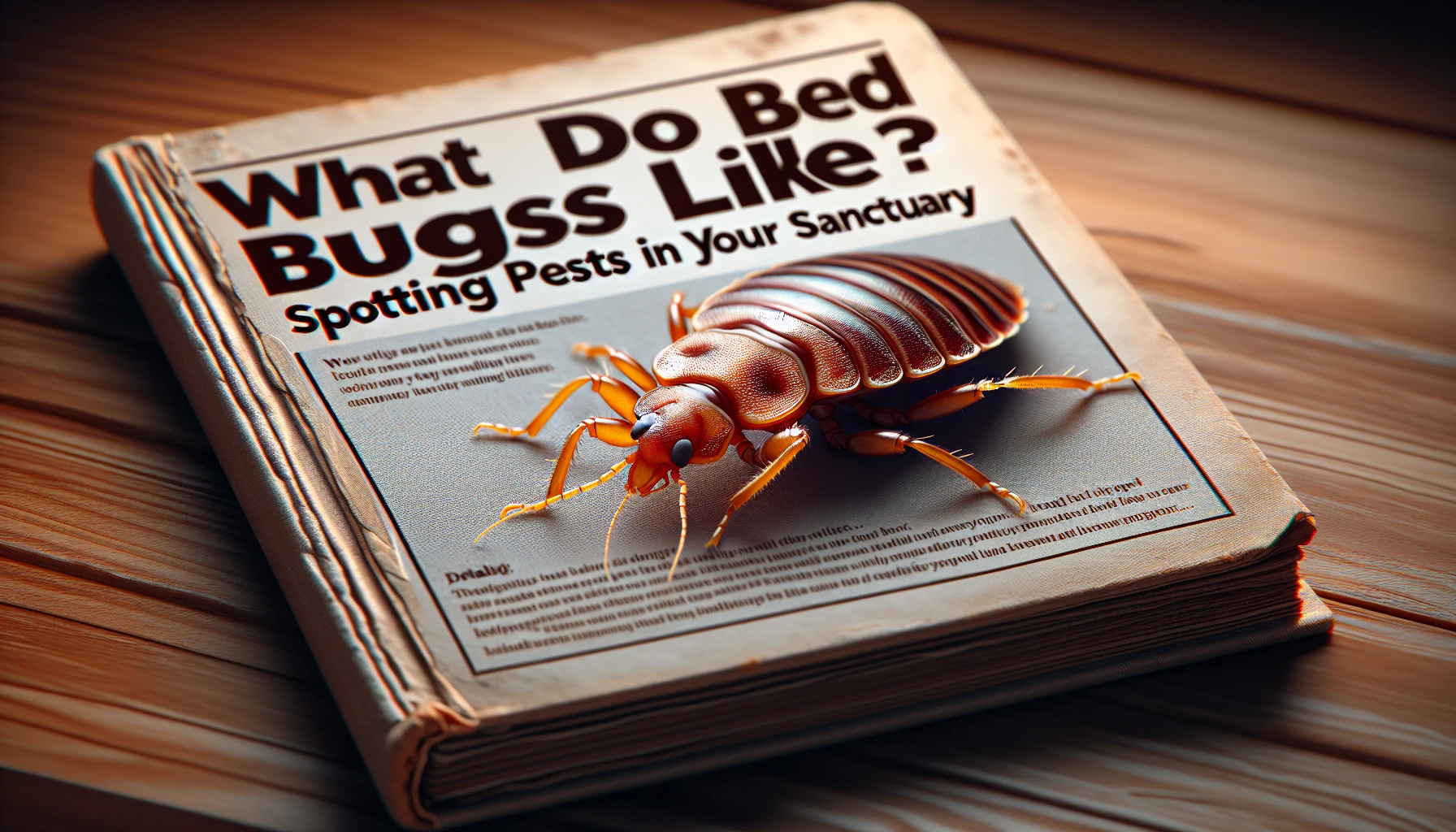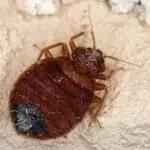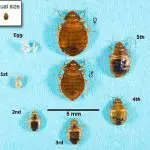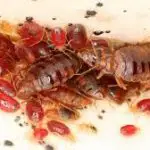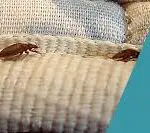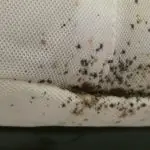What Do Bed Bugs Look Like: Spotting Pests In Your Sanctuary
Introduction
The familiar saying, “Don’t let the bed bugs bite,” takes on a very real meaning when you understand the importance of identifying these pests early on. A full-blown bed bug infestation is not only a nuisance but can be a significant threat to your peace and comfort. These tiny, elusive critters might be difficult to catch red-handed, but knowing what you’re looking for is a crucial first step in protecting your sanctuary.
Bed bugs are tiny, nocturnal insects that have a knack for turning your mattress into their dining room. They’re sly, they’re hungry, and they’re masters of hide-and-seek. This guide is designed to arm you with the knowledge necessary to spot a bed bug before it turns into an infestation—empowering both homeowners and renters to take immediate action.
Imagine this: You’ve recently hosted a friend from out of town, and after a week of sightseeing and late nights, you find yourself with an uninvited souvenir—an itchy, red bite, or maybe a cluster of them. Could it be bed bugs? Before you panic and turn your room upside down, let’s get up close and personal with what these pests look like. Knowledge is power, and in this case, it could save your skin—literally. For an in-depth look at identifying bed bug bites, check out this helpful video:
Now, I’m sure you’re thinking about prevention—how to keep these pests from calling your bed “home” in the first place. It all starts with understanding the enemy. Here’s a step-by-step guide that offers valuable insights into keeping your home bed bug-free. Armed with the right information, you can make sure that the only thing snuggling with you at night is your comforter.
As you continue through the rest of this article, we’ll delve deeper into the world of bed bugs, demystifying their habits and revealing how to spot them before they become an unwelcome fixture in your life. Let’s begin this journey with a clear vision and a proactive mindset. After all, the best offense is a good defense!
Recognizing Bed Bugs: Appearance and Behavior
Unwanted sleepover guests, bed bugs, are notorious for their hitchhiking skills and love for cozy hideaways. Spotting these tiny intruders early on is crucial, but what do these pests look like? Think of a flat apple seed, and you’ve pretty much pictured an adult bed bug. With their reddish-brown, oval bodies spanning about 5 millimeters in length, these insects can be quite the masters of disguise.
Bed bugs are not just about aesthetics; their behavior is as stealthy as their appearance. These creatures are the ninjas of the pest world, using the cloak of darkness to their advantage and feeding on unknowing humans during the night. By day, they retreat to their secret lairs in mattress seams, electrical outlets, and even behind wallpapers.
Lest you think bed bugs are a one-size menace, let’s introduce their offspring, the nymphs. These mini critters are smaller than a sesame seed and start life with a ghostly translucent body. With each blood meal, they molt and gradually gain their characteristic brown tone. It’s an eerie transformation that could rival any shape-shifter’s prowess!
Seeing is believing, so to truly arm yourself in the battle against bed bugs, check out this informative video which is particularly eye-opening. It delves into the surprising places bed bugs can arise from, driving home the point that vigilance is key when it comes to these unwelcome bedfellows.
${video.embed_code}
Understanding bed bugs extend beyond mere recognition; it’s about knowing their habits and habitats. For more insights, take a peek at our expert guide on spotting and soothing the nightmare of bed bug bites. It’s a crucial piece of the puzzle in maintaining a peaceful and pest-free sanctuary.
Whether you spot a lone bug on your pillow or the tell-tale signs of a full-blown infestation, reacting swiftly is the name of the game. Knowledge, alongside timely intervention, is your best defense against these hide-and-seek champions.
The Bed Bug Life Cycle
Imagine returning home from a vacation and a week later, you spot tiny, white eggs in the seam of your mattress. Fast forward, and the situation crawls out of control—literally. Bed bugs, the sneaky critters that they are, progress through a fascinating, yet hair-raising life cycle that can turn your sanctuary into their playground if left unchecked. Let’s peel back the sheets and expose these pests, stage by eerie stage.
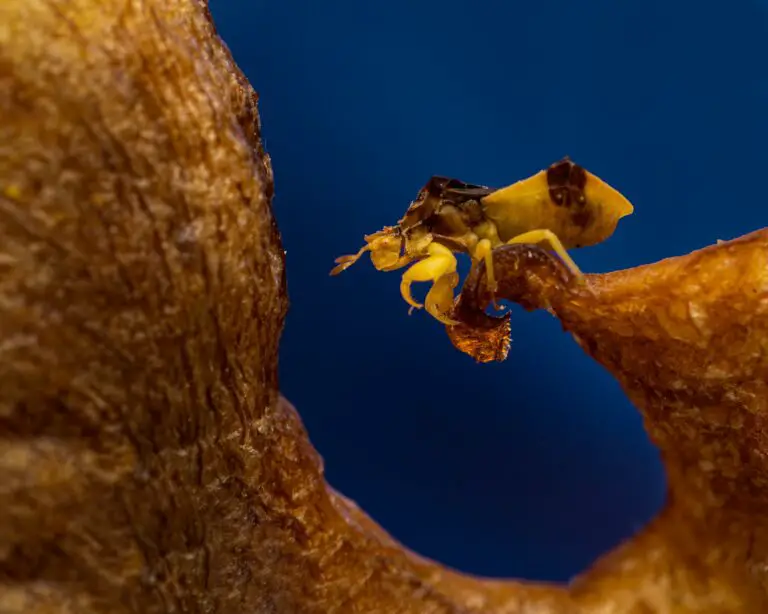
Starting off as pinhead-sized eggs, bed bugs hatch into miniature versions of their parents, known as nymphs. Within this pint-sized phase, they remain translucent, gaining color and size with each blood meal consumed. Surprisingly, a nymph can bloom into adulthood in about five weeks under ideal conditions, sometimes shorter.
Egg Stage: The Bed Bug’s Humble Beginning
Our story begins with eggs—pearly and no larger than a speck of dust. A female lays approximately one to five eggs daily, stealthily sticky variants that cling to surfaces, evading our eyes. These eggs, your uninvited house guests, are poised to crown a new generation of bloodthirsty inhabitants in just 6 to 10 days.
Nymph Stages: The Growth Phases
Once emerged, nymphs hustle for their first feast. They molt five times, each step a bit closer to their dastardly adult form. Transparent at first, they gain a reddish-brown hue as they gorge and grow. Think of nymphs as teenagers with an appetite for expansion—both in size and numbers. With each shed skin, you could be a step closer to an infestation.
Inspecting these stages closely is critical because it tells you just how deep you’re in the thick of the bed bug marathon. By getting down and dirty with a flashlight, you may witness nymphs in a contest to reach maturity, racing through each molt over a relentless 5-week span.
Armed with this knowledge, you can fortify your home against the what do bed bugs look like query that keeps so many awake at night. Understand that recognizing these stages is key to intervening before your peaceful sleep becomes a buffet for these nocturnal nuisances.
Signs of a Bed Bug Infestation
Are you waking up with itchy bite marks and can’t figure out why? It’s time to sleuth around your sleeping quarters for evidence of bed bugs. Yes, those pesky little critters we’d all rather not think about might be snuggled in a bit too close for comfort.
Let’s chat about some giveaways that these unwelcome guests have made themselves at home. First on the list are blood spots on your sheets or pillowcases. It’s not something out of a horror movie, it’s just your blood—and it’s a telltale sign these bugs have been feasting. If you’re noticing rusty or reddish blotches, it’s time to investigate further.
Moving on to fecal matter. Not a pleasant topic, but crucial for spotting an infestation. Bed bugs leave behind little black streaks or dots—think ink spots from a fine tip pen—typically found on mattresses, bedding, and even walls. If you’re finding these grim traces, it’s a strong indication of bed bug activity.
And don’t forget about eggshells or shed skins. Bed bugs go through several life stages, and each transition means they’re leaving behind a little souvenir. These tiny, pale yellow skins or shells can be found near their hideouts.
Remember, these vampires of the bug world love wood and fabric, so expand your search beyond the bed. Check out the nooks and crannies of your bed frame, headboard, and even between couch cushions. And keep an eye out for live bed bugs too—they’re flat, reddish-brown, and about the size of an apple seed. Catching a live one is like hitting the jackpot in confirming their presence (though it’s one jackpot you’d rather not hit).
Now, for a visual guide on how to recognize these sneaky critters, take a peek at this video: “What Bit Me? Spot These 12 Bug Bites.” It’s packed with tips and tricks to identify various bug bites, including those from bed bugs, so you can take action swiftly!
Tackling a bed bug problem starts with knowing what you’re up against. Stay vigilant and don’t let these little buggers rob you of a good night’s sleep!
Common Places to Find Bed Bugs
Uninvited guests skulking in the shadows of your bedroom… sound familiar? We’re not spinning a campfire horror story here; we’re talking about bed bugs! Believe it or not, these critters are master hiders, tucked away in places you’d typically shrug off. Let’s turn the spotlight on these cozy corners they so love.
First stop: the mattress. It’s like a five-star resort for these pests, with all the warmth and food they can dream of (AKA you!). But it’s not just the mattress they adore. Bed frames and headboards, with their nooks and crannies, make perfect hidey-holes. Ever wonder why your early morning might include surprise bites? Now you know.
The invasion doesn’t stop at the bed; these tiny squatters can shimmy into the smallest of spaces. Picture this: a family gathers around the TV, not realizing that the bed bugs are treating the couch like their own personal Airbnb. And it’s not just the cushions—check the seams and under those decorative pillows; it’s their equivalent of a bed-and-breakfast!
Now imagine you’re rifling through your dresser, and as you reach for your favorite sweater, guess who’s made a home in the drawer corners? Yup, bed bugs. They’ve left the bed for a wardrobe walkabout! And if you think that’s sneaky, they also crash in curtain folds and wall cracks. Suddenly, your serene sanctuary seems more like a bed bug jamboree!
So, what’s the takeaway? Regularly inspect these popular hangouts. Flip that mattress, scrutinize your bed frame, and don’t overlook your electronics! Earlier, we mentioned a local family’s couch catastrophe; turns out, remote controls and alarm clocks can be secret bed bug bunkers. Who knew?
Remember, identifying the problem is step one. For more on safeguarding your snooze space against these miniature marauders, check out our intricate guide on bed bug prevention. Knowledge is power—and the power to evict these pests is in your hands.
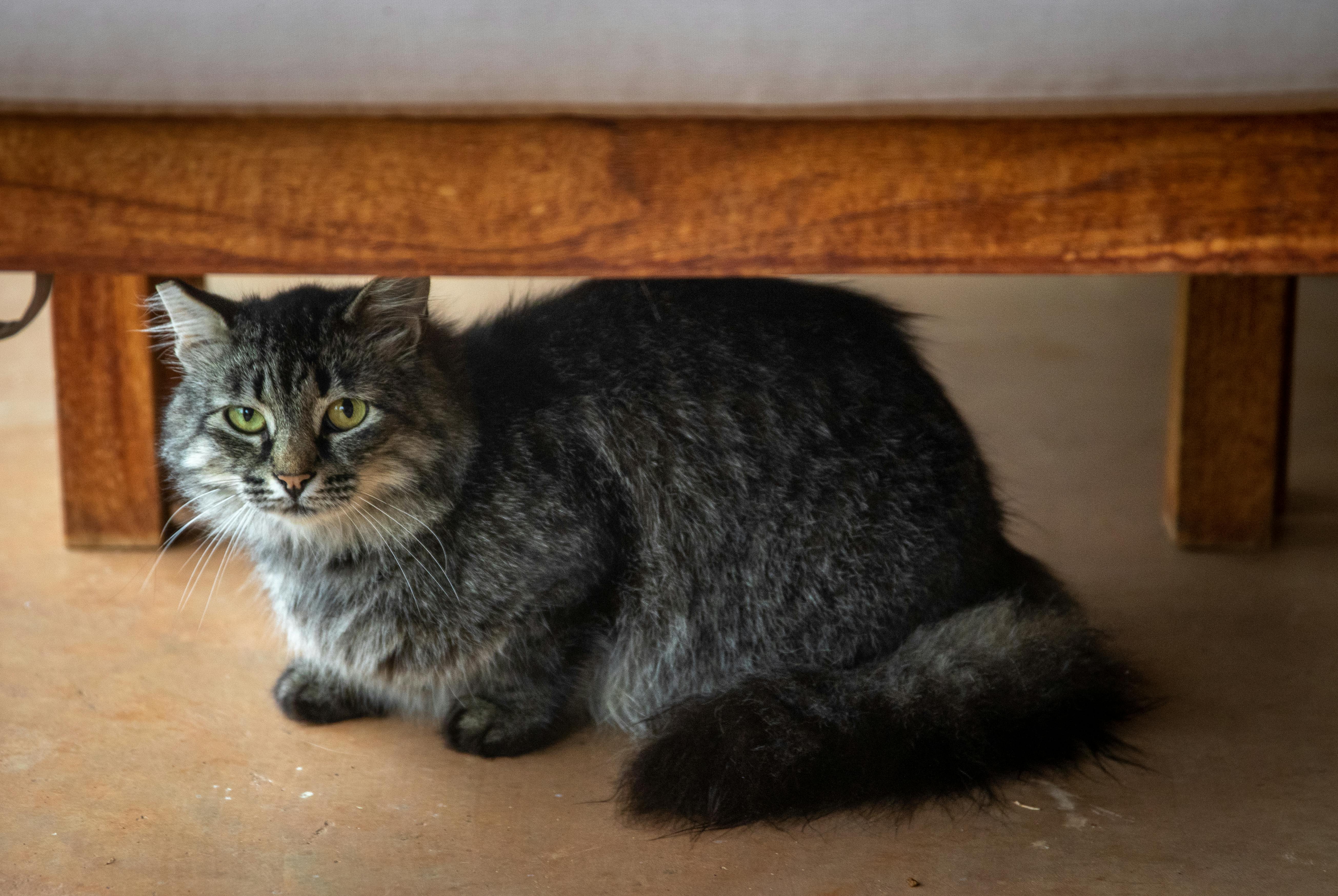
Distinguishing Bed Bugs From Other Pests
You know the feeling. You wake up with a mysterious bite and immediately think, “Uh-oh, do I have bed bugs?” Before you go into full panic mode, let’s play a bit of a detective game and compare these clandestine critters to other common household pests. Spotting a bed bug can be a bit like finding a needle in a haystack, but with the right info, you’ll be more than a match for these uninvited guests.
First off, adult bed bugs are sneaky little things about the size of an apple seed, with a reddish-brown color and a flat, oval-shaped body. They love a good game of hide and seek, often nesting in the folds of your mattress or between couch cushions. Now, don’t confuse them with fleas, which are smaller, darker, and champions of the long jump. Fleas prefer your furry friends over you, so if Rover is scratching more than a DJ at a hip-hop club, it might not be bed bugs to blame.
Then there are dust mites, microscopic little critters that munch on dead skin cells. Although they share the ‘bed’ part of ‘bed bugs,’ they’re too tiny to see with the naked eye and don’t leave those telltale bites. So if you’re spotting bite marks, dusty isn’t our culprit. On the other hand, bed bugs will leave a linear pattern of red, itchy welts as souvenirs on your skin. Nice of them, right?
Perhaps you thought you saw a bed bug, but it was just an apple seed left from your breakfast in bed—happens more often than you’d think! But here’s a tip: bed bugs don’t smell like apples, nope. They give off a musty odor, so that’s another clue for your investigation. And unlike the fast-multiplying yet harmless lint bugs, these guys bite, and they’re anything but benign.
Let’s not forget about the bane of every book lover, the silverfish. Slender, wingless, and speedy, they’re nothing like our bed bugs. You’ll find silverfish lurking near your beloved tomes, whereas bed bugs are more interested in, well, you.

Identification is key in the game of pest control. The better you know your enemy, the better you can protect your sanctuary. Think you’re facing an invasion? Keep calm and check out our guide on spotting and soothing bed bug bites—your first step in distinguishing friend from foe and taking back the night!
Remember the old saying, “Know thy enemy”? Well, it turns out it’s pretty handy advice when it comes to pests. Train your eyes to notice the fine details, and soon you’ll be the Sherlock Holmes of the insect world. Now, let’s put those investigative skills to the test and send those bed bugs packing!
Do-It-Yourself Prevention and Control
Waging war against bed bugs starts with foresight and a keen eye. Think of yourself as the detective in a crime drama who checks every nook and cranny for clues. Regular inspections of your sleeping quarters are your first line of defense. Peel back those sheets and scrutinize the seams and underbelly of your mattress. Imagine a scenario where you’re changing the bed linens and—ahoy!—there’s a small congregation of bed bugs conspiring near the bed frame. Catching them red-handed (or should we say red-bellied?) early on is crucial to keeping your sanctuary pest-free.
Now, let’s talk about your trusty sidekick in this battle: the vacuum cleaner. Arm yourself with this tool once a week to suck up any suspicious critters from the bedroom kingdom. Those bed bugs might be auditioning for a hide-and-seek championship, thinking they can outsmart you by diving into the carpet or wedging themselves into the wall’s crevices. Show them there’s no escaping the mighty force of your vacuum’s nozzle. Remember, it’s not a mere cleaning routine—it’s a strategic sweep of the premises!
Keeping bed bugs from setting up camp in the first place can be as simple as suiting up your mattress and pillows with protective covers. These are the bed bugs’ kryptonite—transforming their potential home into a fortress they can’t penetrate. With a proper cover, even if they try to hitch a ride on your luggage after a vacation or hide within second-hand furniture treasures, they’ll have to wave a white flag at the gates of your linen fortress.
But let’s not underestimate the power of natural and chemical treatments ready to be deployed by your hands. Imagine unleashing an army of diatomaceous earth—a natural, powdery substance—along the perimeter of your room. It’s like laying out a minefield for these insects, causing them to dehydrate as they trek across the treacherous terrain. And if you decide to go the chemical route, picture those pesky bugs meeting their match against insecticides meticulously sprayed in strategic locations, wiping out any trace of their existence. DIY efforts can be both rewarding and effective when you’ve got the right tools and tactics at the helm.
Let’s be real—when it comes to what bed bugs look like, nobody wants to witness that horror show up close. But armed with knowledge and the right preventative measures, you can ensure that the only things tucking you in at night are your cozy blankets.
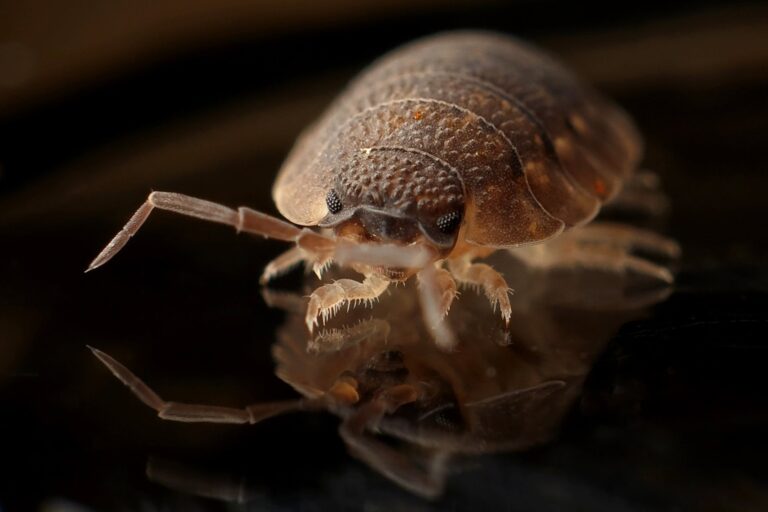
When to Call the Professionals
There comes a moment in every infestation saga where you’re faced with the question: To call, or not to call, the pest control experts? You’ve seen some suspicious signs, what do bed bugs look like whirls in your mind as you eye every speck and smudge on your mattress. Perhaps you’ve even spotted a bed bug or, more distressingly, a congregation of them, turning your sanctuary into a buggy bonanza. That’s your cue! It’s time to pick up the phone.
Professional pest controllers are the cavalry of the bug busting world, armed with the tools and know-how to reclaim your restful retreat. So, what signals the right moment to zoom in the pest control experts? Let us paint the picture: imagine you’re changing your sheets, and you spot the telltale brownish stains on the mattress. Or worse, those tiny, oval critters themselves—yep, those are bed bugs.

Drawing the line can be tough, but generally, if you’re spotting bed bugs regularly and your DIY treatments are more ‘miss’ than ‘hit’, it’s time to let the experts take the stage. They’ll swing in with treatments that are not only effective but also tailored to your particular infestation and living situation. They may use heat treatments, insecticide sprays, or even freezing techniques to send the bed bugs packing.
Preparing your home for the great bed bug exodus involves some housekeeping gymnastics. You’ll want to clear out clutter, vacuum like you’re searching for gold dust, and seal up your belongings to keep them from becoming accidental stowaways on a bed bug world tour. The process might be inconvenient, but think of it as necessary prep work for the ultimate peace of mind.
Expect professional treatments to be thorough. The experts won’t just treat your bedroom; they understand that bed bugs are tiny travelers and will inspect your entire abode. Keep in mind, follow-up visits are a standard affair, as pesky bed bugs often warrant an encore to ensure every nook and cranny is clear.
In a nutshell, if your peaceful slumber has turned into a nightly bug watch, it’s time to escalate the battle. Surrendering to professional help isn’t defeat—it’s a strategic move towards victory. So, when what do bed bugs look like shifts to ‘I know exactly what they look like, and they’re everywhere!’—make the call, and take back your sanctuary from these unwelcome guests.
FAQs: Answers to Your Burning Bed Bug Questions
Ever found yourself tossing and turning, not because of an uncomfortable mattress, but the thought of bed bugs crawling around? You’re not alone. Let’s get down to the nitty-gritty details and unpack some of the most commonly asked questions about these elusive pests, helping you spot the red flags before your sanctuary turns into a playground for bed bugs.
What Exactly Do Bed Bugs Look Like?
Picture this: You’re changing your sheets and there it is… a tiny, brownish insect the size of an apple seed. That’s your first clue. Bed bugs are small, oval, and flat, allowing them to hide like expert ninjas in the nooks and crannies of your bedroom. But it’s not just their shape and size that’s a give away – they also have this uncanny ability to give a quick visual transformation post a blood meal, turning redder and plumper, like miniature balloons.
Where Should I Look for Bed Bugs?
If you suspect these critters have set up camp in your space, think like a detective. Check the usual suspects – the seams of your mattress, box springs, bed frames, and headboards. But don’t stop there. Remember, bed bugs are the ultimate hide-and-seek champions, so scan those bookshelves, edges of carpets, and even electrical outlets near your bed. It’s like they always say, ‘better safe than nibbled at night’!
How Can I Keep Bed Bugs at Bay?
Maintaining a fortress against bed bugs starts with vigilance. If you’re a traveler, examine your hotel accommodations. When you return home, it’s laundry time – and yes, that includes a close inspection of your luggage. Keep your living space decluttered (because bed bugs love to play hide-and-not-seek) and consider encasements for your mattress and pillows. It’s all about sealing the deal and leaving no room for these pesky guests.
Spotting the Enemy: A Visual Guide to Bed Bugs
They say a picture is worth a thousand words, but when it comes to bed bugs, a moving image might just be priceless. Understanding the enemy is half the battle won, so here’s a visual aid to help sharpen your bed bug identification skills. Check out this informative video on how to spot these unwelcome visitors:
${video_embed_code}
What’s the Deal With Bed Bug Bites?
You woke up with bites – uh oh. Bed bug bites often come in lines or clusters, looking like small, swollen red spots. What’s worse, they itch like crazy. Sometimes they can be mistaken for mosquito bites or rash, but if you’re finding these after a night’s sleep, and especially if you’ve noticed the other signs we’ve talked about, it might be time for some bed bug detective work.
Vanquishing the Vampires: Can Bed Bugs Be Eradicated?
Absolutely, but it’s going to take some serious elbow grease. Bed bugs are stubborn, but they’re not invincible. Professional exterminators equipped with expertise and the right insecticides can show these bloodsuckers the door. For the DIY enthusiast, thorough vacuuming, steam cleaning, and diligent washing of bedding at high temperatures might do the trick. Consistency is key – these critters are survivors, so persistence is crucial to send them packing!
Embedding practical wisdom and real-life examples in our chat about bed bugs, we hope these insights empower you to keep your bedroom a true sanctuary. With the right knowledge and actions, you can maintain a bed bug-free zone and rest easy. Remember, awareness is your armour, and a proactive stance is your best defense against these sneaky critters.
${video_embed_code}
FAQs: Answers to Your Burning Bed Bug Questions
Is your bedroom sanctuary becoming a bed bug battlefield? Fear not! Let’s bust some myths and arm you with the know-how on everyone’s least favorite sleepover guests—bed bugs.
Okay, So What Do Bed Bugs Look Like?
Imagine you’re in a spy movie, searching for the villain. That’s how you need to investigate bed bugs. These tiny, brownish rascals are masters of disguise, typically flatter than a credit card and can resemble an apple seed, especially to the untrained eye. Once they feast on blood, they bloat up like a balloon and no longer play the flat game.
Finding The Hideout: Where Do These Critters Cuddle?
Let’s set the scene. You’re lying in bed, and you notice a speck by the bedpost. Upon a closer look, it’s a bed bug! But where there’s one, there might be more. Routine checks in the seams of your mattress, the folds of your curtains, and even behind wall frames could reveal their covert nests.
Prevent Them Beforehand: How Do I Stop An Invasion?
Ever heard of ‘defensive slumber’? That’s when you equip your bedroom like a fortress. Think of encasements for your mattresses, and be a tad paranoid about your luggage after traveling. Yep, these critters are hitchhikers at heart. Keep it clean, keep it tight, and most importantly, stay vigilant. De-clutter like there’s no tomorrow as a clutter-free room gives fewer hiding spots for these pesky pests.
The Infamous Biters: Got Bed Bug Bites?
Join the club! Bed bug bites often form a line of small, red, itchy mounds on your skin. And unlike the mosquito’s hit-and-run approach, these bites stick around and party on your epidermis. If you find these, along with blood spots on your sheets, it’s not an art project gone wrong—it’s a bed bug frenzy!
Casting Out the Vampires: Can I Get Rid Of Bed Bugs For Good?
The answer is a resounding yes! But be prepared for a crusade against these miniature Draculas. While professionals have potent potions and tools to banish them from your abode, you too can play the hero. With heat treatments, insecticides, and a vacuum cleaner as your trusty sword, you can take charge of your domain. Remember, consistency wins this war. Regular inspections, clean-ups, and preemptive strikes will keep your sanctuary sacred.
Embedding our FAQ session with real-life espionage and encounters, we hope to have equipped you with the arsenal needed to identify, prevent, and eliminate bed bugs. Keep your eyes peeled, your linens clean, and your sanctuary serene!
